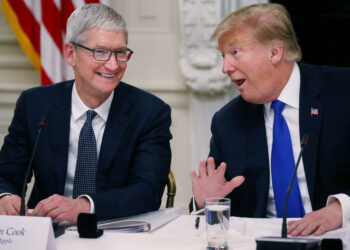By WIRED
This year’s Emmys marked the event’s 75th anniversary. As part of the festivities, aired Monday night, the ceremony held cast mini-reunions for some of television’s biggest shows: Cheers, The Arsenio Hall Show, Grey’s Anatomy, Martin, even Game of Thrones. It was a testament to the way TV has infiltrated popular culture—and the ways streaming has altered that influence forever, giving space to weird, genreless shows that might have floundered in prime time.
Take, for example, It’s Always Sunny in Philadelphia. That show has been running for nearly 20 years; it’s TV’s longest-running live-action sitcom. Yet, when the gang—Charlie Day, Glenn Howerton, Rob McElhenney, Kaitlin Olson, Danny DeVito—took the stage during the Emmys telecast, it wasn’t to receive an award, it was to present one. During their pre-presentation bit, they asked around if anyone had an Emmy. DeVito was the only one who said yes. That was for Taxi in 1981. “Rhea [Perlman] won four for Cheers,” DeVito cracked.
It’s Always Sunny then, might just be the right show at the wrong time. It’s an FX show with a devoted following that has become a binge-watch favorite on Hulu. It premiered in 2005, a scant two years before Netflix began streaming, when awards darlings were big network shows like Lost and The Office. In the late-’90s and early aughts, even shows like The Sopranos got edged out by network dramas like The West Wing. (Sopranos got an Emmys tribute on Monday; West Wing did not.) Over time, Sunny gained followers via streaming (as did The Office), but never the awards recognition. Had it premiered on Hulu 10 years later, that might be a much different story.
Reminders of this phenomenon were prevalent throughout the Emmys show. When the cast of Grey’s Anatomy came out it felt like a flashback to the days when one death on the show (you know which one) would send the Television Without Pity internet into a (t)Izzie for a week. And Grey’s Anatomy is still on the air. It’s a beloved comfort watch, but it hasn’t been nominated for an Emmy since 2012.
That’s because streaming, and prestige cable TV before it, has transformed what people watch and how. Networks used to pump out big-budget, popular shows like ER, and everyone would watch. That changed as shows like Hulu’s The Handmaid’s Tale became real contenders. They never got the viewership of, say, Everybody Loves Raymond, but it didn’t matter. They made streamers and small cablers—and those in the middle like HBO Go/Max/etc.—look good.
This came into focus Monday night when Jon Hamm came out to talk about Mad Men’s jaw-dropping 116 Emmy nominations and 16 wins. Technically, that’s only one more win than a show like Raymond, but 32 million people watched that sitcom’s finale. You know how many people watched Mad Men’s when it aired? 4.6 million, if you include folks who watched it a few days later on DVR.







Discussion about this post